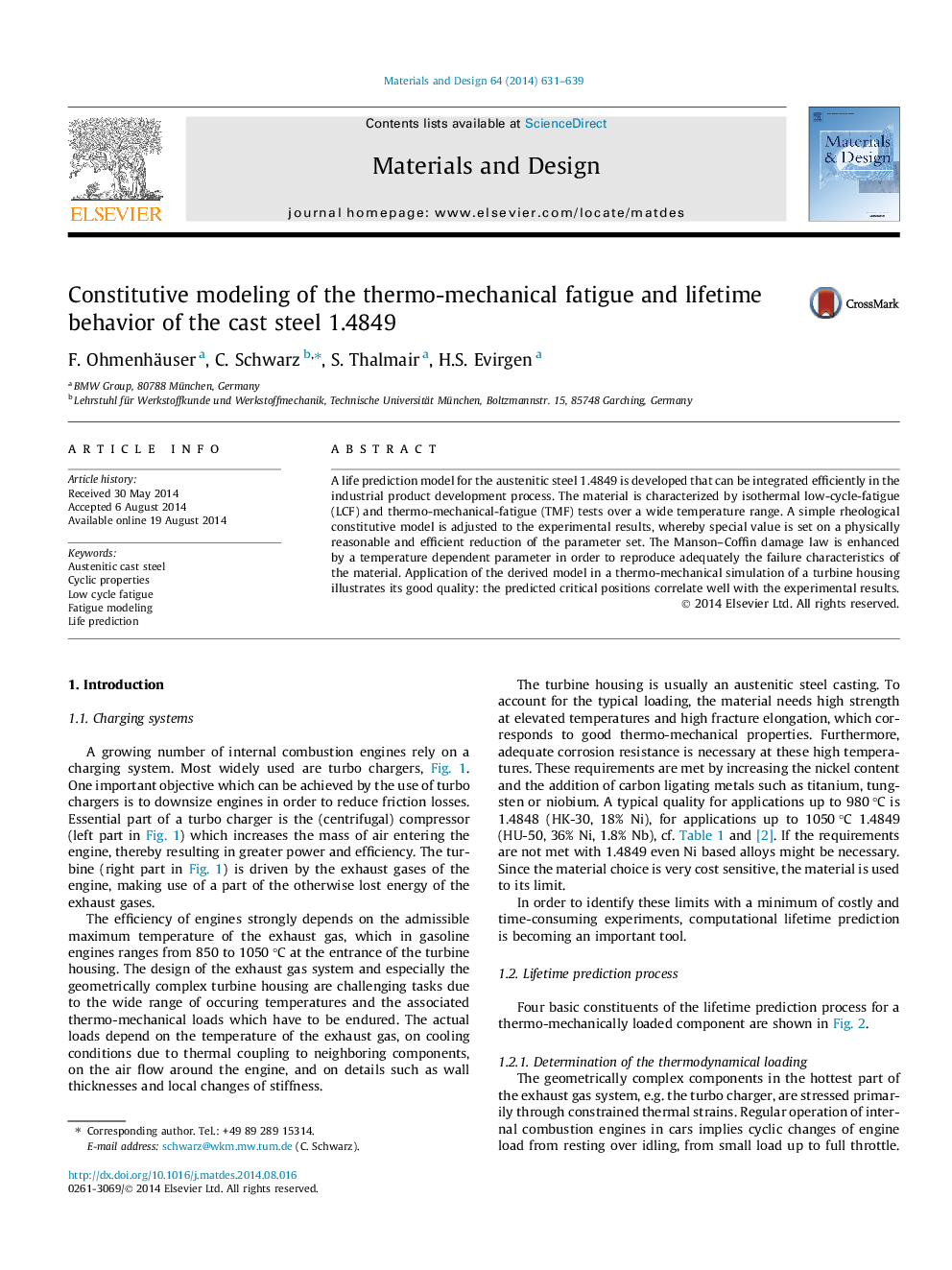| Article ID | Journal | Published Year | Pages | File Type |
|---|---|---|---|---|
| 828950 | Materials & Design (1980-2015) | 2014 | 9 Pages |
•The austenitic cast steel alloy 1.4849 is characterized by LCF tests up to 1000 °C.•A rheological constitutive model is adapted based on a minimal set of parameters.•The Manson–Coffin law is enhanced to account for temperature-dependent damage behavior.•The TMF lifetime method is efficiently incorporated into the industrial CAE process.
A life prediction model for the austenitic steel 1.4849 is developed that can be integrated efficiently in the industrial product development process. The material is characterized by isothermal low-cycle-fatigue (LCF) and thermo-mechanical-fatigue (TMF) tests over a wide temperature range. A simple rheological constitutive model is adjusted to the experimental results, whereby special value is set on a physically reasonable and efficient reduction of the parameter set. The Manson–Coffin damage law is enhanced by a temperature dependent parameter in order to reproduce adequately the failure characteristics of the material. Application of the derived model in a thermo-mechanical simulation of a turbine housing illustrates its good quality: the predicted critical positions correlate well with the experimental results.
